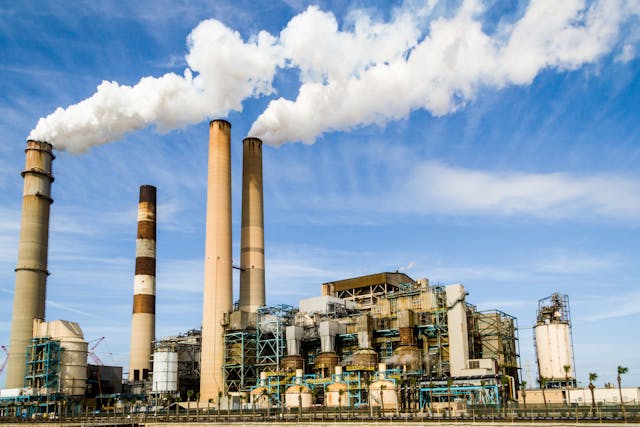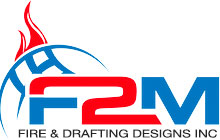Fire Sprinkler System Design for High-Risk Environments: Key Considerations
Fire sprinkler systems design for high-risk environments requires careful planning and specialized knowledge. These environments, which include industrial facilities, chemical plants, and data centers, present unique challenges that demand robust and reliable fire protection solutions. In this blog post, we will explore the key considerations for designing fire sprinkler systems in high-risk environments.

Understanding the Unique Risks
Identify Fire Hazards
The first step in designing an effective fire sprinkler system is to identify the specific fire hazards present in the environment. Consider:
- The types of materials and substances that could ignite, such as flammable liquids, chemicals, or electronic equipment.
- The processes and activities that could potentially cause a fire.
- The historical data on fire incidents within similar environments.
Assess Fire Load
Understanding the fire load, or the amount of combustible material present, is crucial for selecting the appropriate fire suppression system. High fire loads require systems that can deliver sufficient water or suppression agents to control or extinguish fires effectively.
Choosing the Right Fire Suppression System
Water-Based Systems
Water-based fire sprinkler systems are a common choice for many high-risk environments due to their reliability and effectiveness. Key options include:
- Wet Pipe Systems: Ideal for environments where freezing is not a concern, providing quick response to fires.
- Dry Pipe Systems: Suitable for areas prone to freezing, with pipes filled with pressurized air until activated.
- Deluge Systems: Designed for high-hazard areas, providing rapid and extensive water coverage when activated.
Foam-Based Systems
Foam-based fire suppression systems are effective for environments with flammable liquids and chemicals. Options include:
- Foam Sprinkler Systems: Combines water with foam concentrate to create a foam blanket that smothers the fire and prevents re-ignition.
- High-Expansion Foam Systems: Generates large volumes of foam to fill an entire room or area, ideal for enclosed spaces.
Gas-Based Systems
Gas-based fire suppression systems are suitable for environments with sensitive equipment and electronics. Options include:
- Inert Gas Systems: Uses gases like nitrogen and argon to displace oxygen and suppress fires without damaging equipment.
- Chemical Gas Systems: Uses agents like FM-200 or Novec 1230 to extinguish fires quickly and safely.
System Design and Layout
Customizing the Design
High-risk environments often require customized fire sprinkler system designs to address specific risks. Considerations include:
- Coverage: Ensuring all areas of the environment are adequately covered by the sprinkler system.
- Spacing: Proper spacing of sprinkler heads to ensure uniform water or agent distribution.
- Accessibility: Ensuring that sprinkler system components are accessible for maintenance and inspection.
Hydraulic Calculations
Accurate hydraulic calculations are essential to ensure the fire sprinkler system can deliver the required flow and pressure to control or extinguish a fire. Key factors include:
- Determining the required water or agent flow rate for the specific fire risk.
- Calculating pressure losses in the piping system to ensure adequate pressure at the sprinkler heads.
Compliance with Regulations
Meeting Safety Codes
Compliance with local, state, and national fire safety codes is critical for the design and installation of fire sprinkler systems in high-risk environments. Key standards include:
- National Fire Protection Association (NFPA) standards, such as NFPA 13 for sprinkler systems and NFPA 16 for foam systems.
- Local building and fire codes specific to the environment and industry.
Regular Inspections and Maintenance
High-risk environments require regular inspections and maintenance to ensure the fire sprinkler system remains operational. Best practices include:
- Monthly visual inspections of system components.
- Quarterly checks of alarm systems and control valves.
- Annual professional inspections and testing of the entire system.
Fire Sprinkler System Design for High-Risk Environments: Conclusion
Designing fire sprinkler systems for high-risk environments requires a thorough understanding of the unique risks, careful selection of the appropriate suppression system, and meticulous planning of the system layout. By considering these key factors, you can ensure that your fire sprinkler system provides reliable and effective protection for your high-risk environment.
At F2M Fire & Drafting Designs Inc., we specialize in designing and installing fire sprinkler systems for high-risk environments. Contact us today to discuss your specific fire protection needs and find the best solution for your facility.
F2M Fire & Drafting Designs Inc.
31 South Street, Suite 3S-4
Mount Vernon, NY 10550
(718) 928-3009
Email: info@f2mfadds.com
https://www.f2mfadds.com/contact
Let our experts help you design a fire sprinkler system that provides robust and reliable protection for your high-risk environment.
